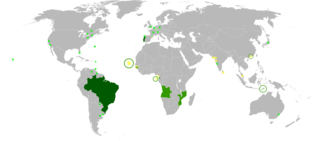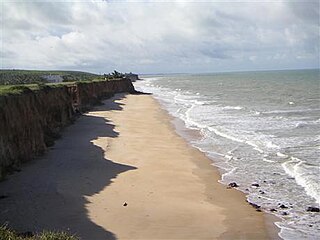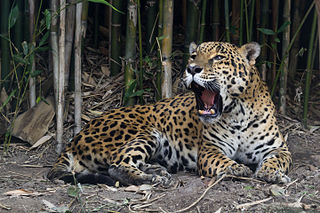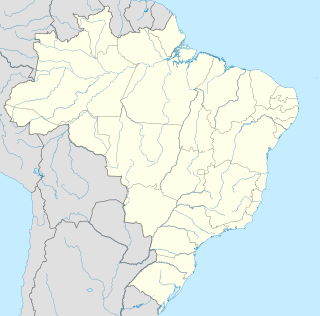| Córrego Grande Biological Reserve | |
|---|---|
| Reserva Biológica do Córrego Grande | |
IUCN category Ia (strict nature reserve) | |
| Nearest city | Pedro Canário, Espírito Santo |
| Coordinates | 18°15′54″S39°48′04″W / 18.265°S 39.801°W Coordinates: 18°15′54″S39°48′04″W / 18.265°S 39.801°W |
| Area | 1,504 hectares (3,720 acres) |
| Designation | Biological reserve |
| Created | 12 April 1989 |
Córrego Grande Biological Reserve (Portuguese : Reserva Biológica do Córrego Grande) is a biological reserve spanning the boundary of Bahia and Espírito Santo, Brazil.

Portuguese is a Western Romance language originating in the Iberian Peninsula. It is the sole official language of Portugal, Brazil, Cape Verde, Guinea-Bissau, Mozambique, Angola, and São Tomé and Príncipe. It also has co-official language status in East Timor, Equatorial Guinea and Macau in China. As the result of expansion during colonial times, a cultural presence of Portuguese and Portuguese creole speakers are also found in Goa, Daman and Diu in India; in Batticaloa on the east coast of Sri Lanka; in the Indonesian island of Flores; in the Malacca state of Malaysia; and the ABC islands in the Caribbean where Papiamento is spoken, while Cape Verdean Creole is the most widely spoken Portuguese-based Creole. Reintegrationists maintain that Galician is not a separate language, but a dialect of Portuguese. A Portuguese-speaking person or nation is referred to as "Lusophone" (Lusófono).

A biological reserve in Brazil is a legally defined type of protected area of Brazil, a conservation unit that aims for full preservation of biota and other natural attributes without human interference. It may be visited only with prior approval of the responsible agency, and only for research or educational purposes.

Bahia is one of the 26 states of Brazil and is located in the northeastern part of the country on the Atlantic coast. It is the 4th-largest Brazilian state by population and the 5th-largest by area. Bahia's capital is the city of Salvador, located on a spit of land separating the Bay of All Saints from the Atlantic. Once a monarchial stronghold dominated by agricultural, slaving, and ranching interests, Bahia is now a major manufacturing center whose last three elections have been dominated by the Workers' Party.
















